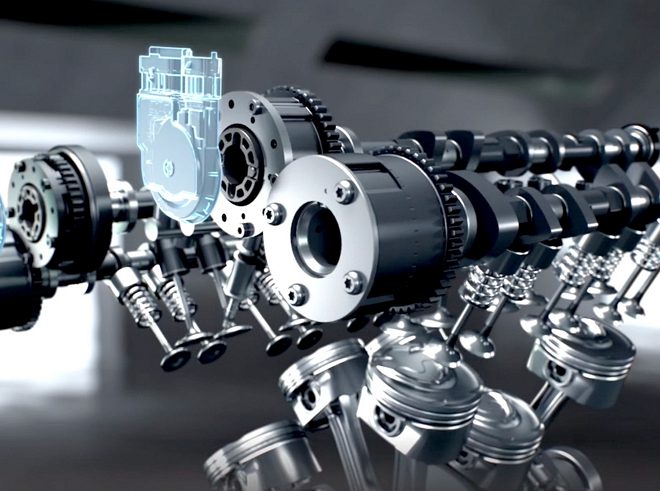
Types of Conveyors and Equipment Used In The Automotive Industry
As the automotive industry continues to develop and improve, so too does the need for efficient manufacturing processes. The cost of hiring labor is continually on the rise; therefore, it is essential for companies to utilize conveyors and equipment systems in order to minimize their overhead expenses.
The automotive industry is one of the world’s biggest sectors worth $3.6 trillion worldwide, and with companies such as EU Automation focusing on perfecting their operations, there are a lot of tools used for manufacturing cars. From conveyors to robotic arms to the paint shop, let’s look at some of the most common pieces of equipment found in automobile manufacturing facilities.
Conveyors
The automotive industry has utilized conveyors for decades in order to produce automobiles at a more rapid pace, saving money and time. The following are a few of the many types of conveyors used in these applications along with a brief description of each:
Chain conveyor – The Chain conveyor is one of the main types of belt conveyors used in a whole array of applications within the Automotive Manufacturing and Assembly industries. Chain conveyors are made up of two sprockets that move along a continuous chain. It is commonly used in a variety of industrial applications. The belt conveyor runs on two pulleys with a loop of material, known as belts that move around them.
Roller conveyor –The roller conveyor is used to transfer heavy objects from one point to another in an industrial area or plant. It can also be used to carry oversized loads like pallets and crates of different materials. A roller conveyor is a very efficient and productive process. As the name implies, Straight Line Skate Solutions is used for the transportation of materials in rolls. It’s commonly used for transporting our material in the auto industry, where the components are raw materials such as aluminium sheets and are auto parts like gears.
Belt Conveyor – Belt conveyors are some of the most popular types of conveyors used due to their versatility and simplicity. They use a rubberized belt that is wrapped around a series of rollers in order to transport objects from one point to another. Belt conveyors can be used horizontally or can be set up on an incline in order to provide easier access for loading and unloading.
Overhead Conveyor – Overhead conveyors are typically used in warehouses, allowing loads to be hung from an overhead structure by means of a hook or similar attachment. This type of conveyor is ideal for use when moving heavy loads as well as when there is not enough floor space for storing additional rollers or other components required by belt or roller style.
Transporter
The transporter is a vehicle that moves cars, such as those that have been completed at a factory, from the factory to a dealership or somewhere else where they will be sold. There are different types of transporters, and some are made specifically for the purpose of moving cars, while others are adapted trucks that perform this function. There are also variations in what kinds of cars can be moved by these vehicles.
Transporters come in many shapes and sizes depending on their uses. Passenger vehicles like sedans and hatchbacks are generally transported on a trailer pulled or driven by an adapted truck. A tractor-trailer rig carries the cars on their own wheels with their engines still running because it is designed to transport cars from one place to another where they’ll be sold at auction or to dealerships. The transporter truck is usually a high-capacity diesel truck with its cargo area enclosed under a low profile roof to protect the vehicles from inclement weather. The engine may be used to drive generators for power for onboard air conditioning and heaters for cold weather conditions.
Assembly system
Assembly systems are used in the automotive industry to ensure that manufacturers can assemble the components with great speed and accuracy. In the early years of automobile manufacturing, workers had to place each part individually by hand. With the advent of assembly lines, this process became unnecessary and extremely time-consuming and laborious.
The use of assembly systems has resulted in more efficient and cost-effective production methods. With the ability to produce a large number of parts at one time, manufacturers could reduce their costs and increase profits. Today, many automotive companies rely on computerized manufacturing processes to produce their vehicles.
Automation has also allowed for greater quality control over overproduction. This allows companies to eliminate defects before they become problems with the vehicle itself. Automation also allows manufacturers to reduce the amount of time spent on repairs.
While automation is still very important in manufacturing today, advances in technology have made it easier for manufacturers to produce parts that are better quality, more durable, and more reliable than ever before. As technology continues to improve, it is likely that assembly systems will continue to improve as well.
Painting and finishing equipment
The painting and finishing equipment used in the automotive industry consists of air compressors, paint booths, ovens, and exhaust systems.
- Air compressors are used to power a wide range of equipment including paint spray guns, sandblasting equipment, and tire inflation tools.
- Paint booths are used to contain vapors that may be harmful to operators working with them, such as paint or solvent vapors.
- Ovens are used to cure painted surfaces.
- Exhaust systems are sometimes installed in buildings as a means of removing harmful vapors from the work environment.
Takeaway
After reading this blog, you should have a better idea of what kind of conveyor system will work best for your automotive business. As you are shopping around for the right conveyors and equipment, consider these factors to make sure you purchase the products that can help your company grow.










[…] Renewable energy is on the rise and being seen in everything from cars to tourism. While the implementation of renewable energy in technology is of the high variety, there’s also a classic manufacturing story behind the generation of batteries. Indeed, as McKinsey highlights, the huge demand for batteries will see a surge in manufacturing demand globally. This rescue of what is a classic industry must be met with proper investment, and that includes the vehicles that are used to power the logistics chain. […]